America’s Best Drive
America is a case study in ultimate superlatives. Everything is the biggest, oldest, tallest or best. So when we heard that the Blue Ridge Parkway was ‘America’s Best Drive’ we were hoping the claim was true. We climbed on the Parkway, known also as ‘The All American Road’ and began to follow it northward. The Parkway was dedicated in 1935 after largely being built through government programs employing unemployed men from the Depression. The road is a marvel in travel, snaking its way through the beautiful mountains, dedicated just for the pleasure of the beautiful countryside, not as a road for locals to use, no commercial activities and with very few entry and exit points. Maybe the claim is true.
The numbers of the Parkway tell part of the story: 469 miles long through two states, 382 Overlooks, 918 Vistas, 168 bridges, 26 tunnels and a steady stream of great places to stop – waterfalls, trail walks, picnic areas, campgrounds, state parks and much more.
We weaved our way up the Parkway, stopping frequently, taking photos, gazing at the view of the mountains below, loving the tall green broadleaf trees towering above us. The road climbed high into the mountains until we came to Mt. Mitchell State Park, marking the spot for the highest mountain east of the Mississippi River. We followed the steep winding road to the top and found ourselves in the middle of a major bicycle race with competitors racing from the valley town of Spartanburg in South Carolina to the top of Mt. Mitchell in North Carolina, 103 strenuous mountain miles and 10,000 vertical feet of ascent to the top.
We took the easier option and drove to the top, walking the last section to claim another summit – Mt. Mitchell at 6,684 feet (2,160 metres) with spectacular panoramic views all around us.
Further north we stopped at Linville Falls and enjoyed the four mile return walk to view these exceptional falls crashing through a narrow gorge with great viewing from the different vantage points. Camp was a little further north at an almost abandoned campground where we probably had 150 spots to choose from and never saw a soul. Day of the Triffids if you know what I mean.
But the Blue Ridge Parkway keeps on giving. At 469 miles, a speed limit of 45 miles per hour (sometimes hard to attain for Tramp given the hills and incessant curves) and many stops along the way the task of making progress was not easy. It seemed every overlook had a view worth stopping for and as we travelled north the steeper mountains gave way to rolling plains and more farms with fields of grain mixed in with the thick forests. And the old split wood fences that lined the road added a beautiful old-world feeling to the drive.
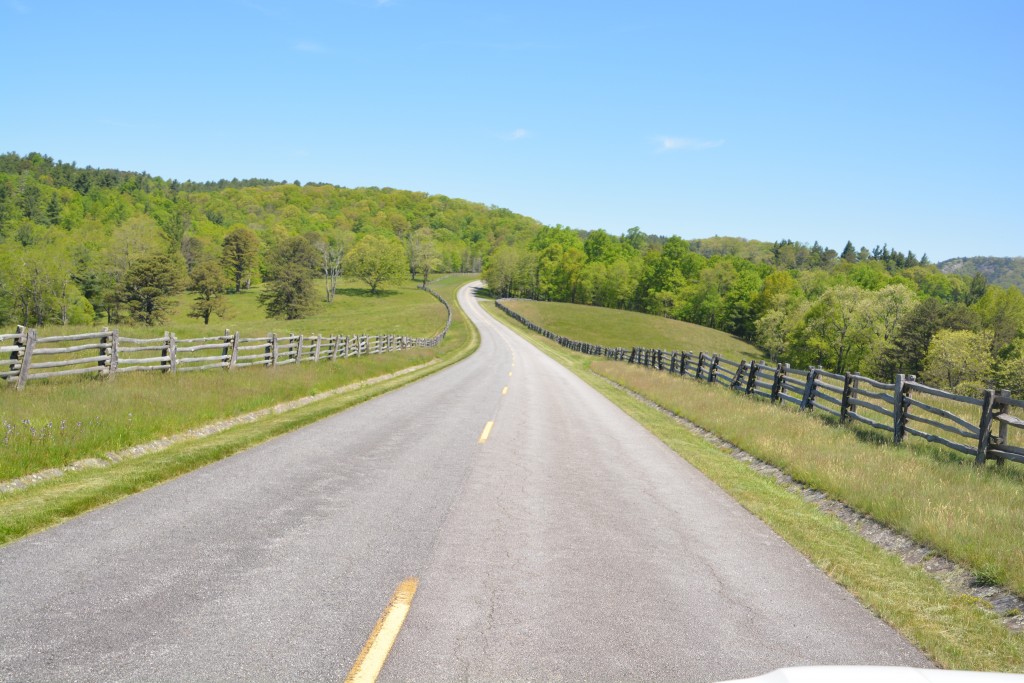
Many sections of the road were lined with the old split rail fencing which added to the scenic drive
But everywhere we looked it was green – a beautiful range of green shades blanketing the fields and hills with the different oaks and dogwoods and birches and beeches and maples and pines all mixing together and all showing off their new spring growth. We loved it.
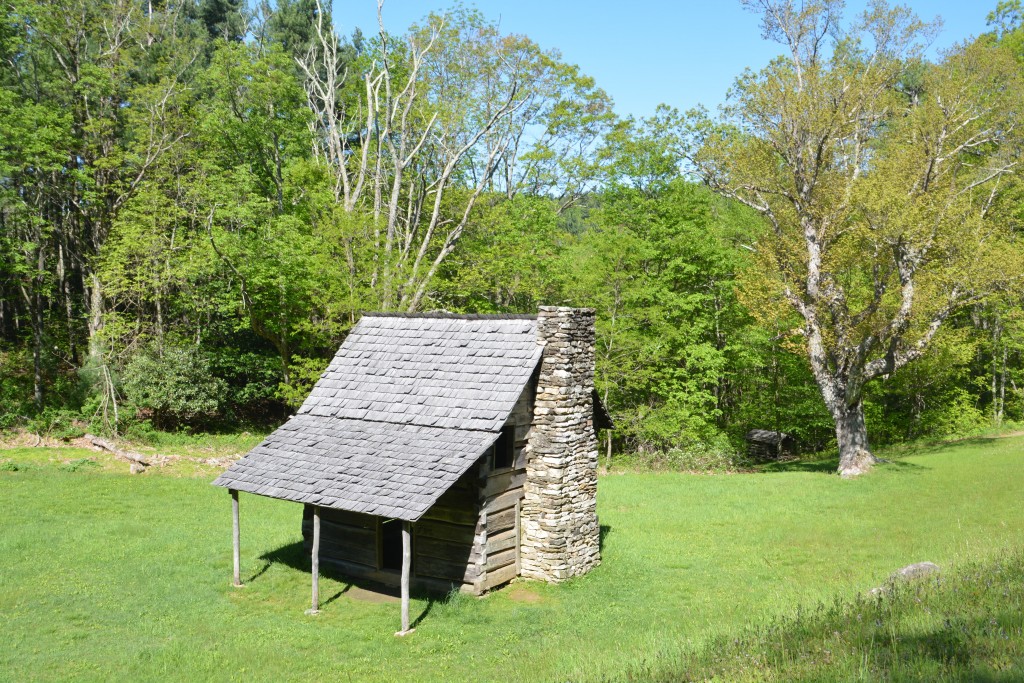
There were quite a few refurbished original buildings along the drive, telling part of the history of these mountains over 100 years ago
North Carolina had proved a hard place to leave, not just because it was a beautiful place to visit but because we had zig-zagged all around it and ended up driving more than 1,200 miles and spending seven nights there before finally escaping and passing into Virginia.
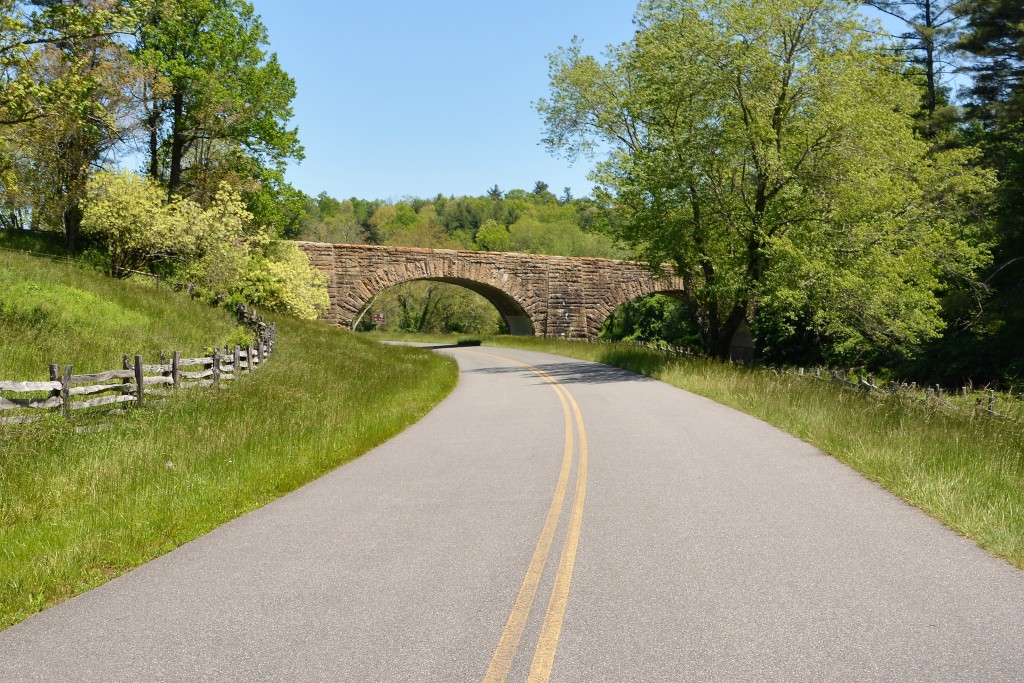
Old stone bridges were built in the 1930’s for other traffic but there are very few entry and exit points on the Parkway – it is strictly for your travelling pleasure
The highlight of the early miles on the Parkway in Virginia was a visit to the Mabry Mill, a beautifully reconstructed mill run by a family in the late 1800’s that used the water from a nearby stream to mill the local farmers’ grain and power a sawmill. Great stuff.
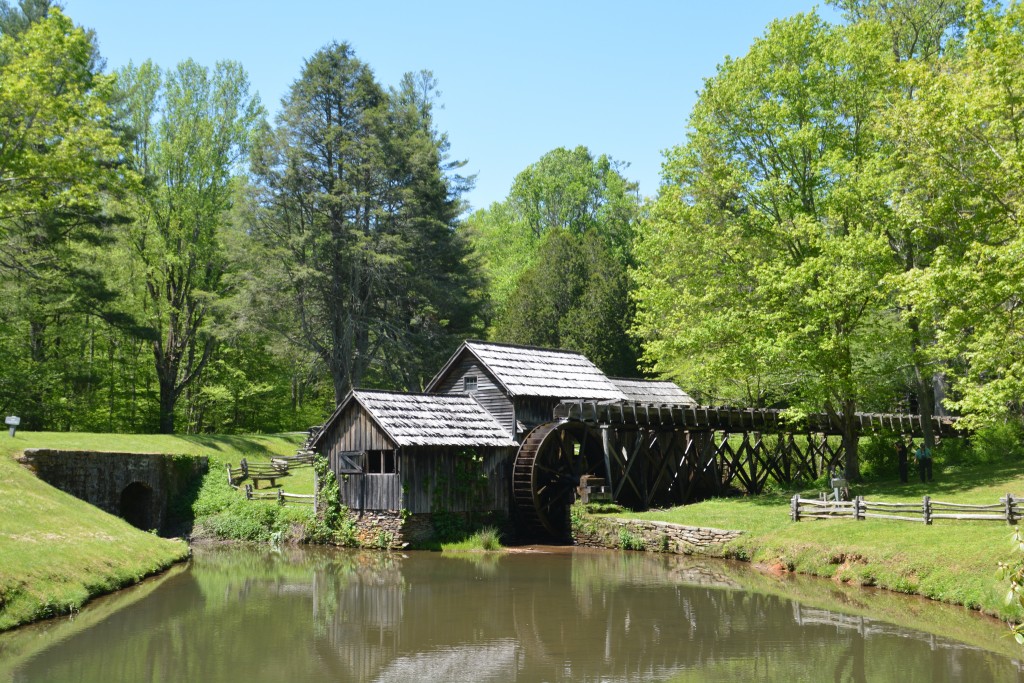
Mabry Mill was one of the highlights of the drive – we explored the mill and all its support buildings…and finished with an ice cream
The next day we could sense the Blue Ridge Parkway was coming to an end but we had a few more things to do before it finished. The road and the Appalachian Trail (AT) frequently crossed each other and we often saw through-walkers, as they are called, resting in the shade near the road. We would sometimes stop, ask if they needed anything and usually ended up topping up their water bottles or handing out fruit and other items.
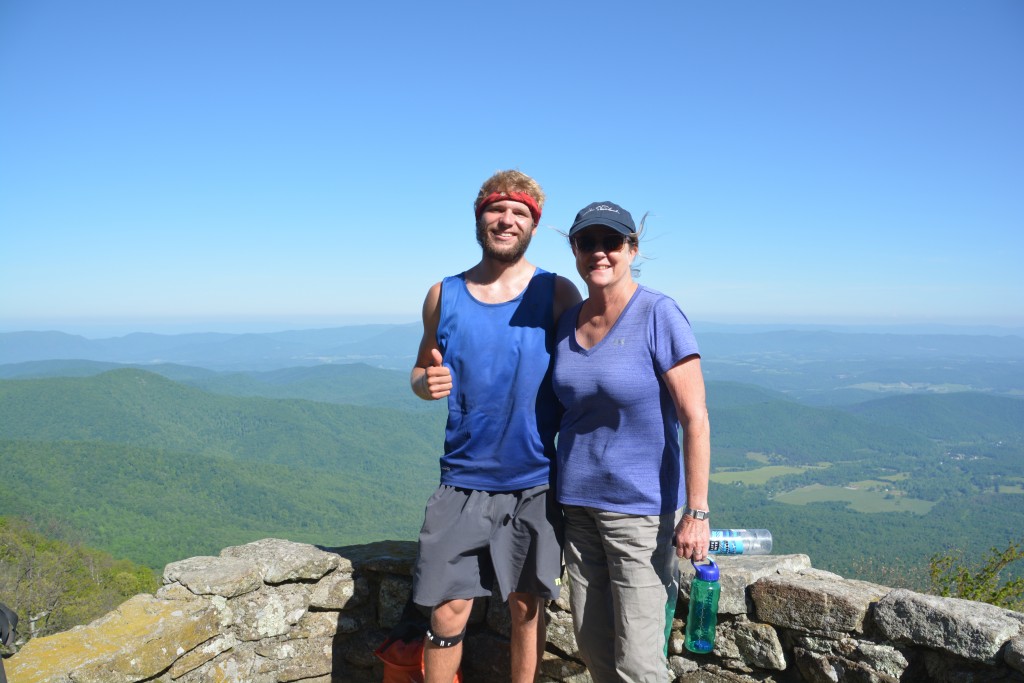
Julie with Dillon, aka Ravioli – his trail name, one of the many hikers we met and gave water and fruit
The walkers were always tired and bedraggled but were grateful for any help we could offer them and share their story with us. To be this far north on the trail at this time of year meant they all started the journey in Georgia back in March and had already walked around 800 miles. They came from Iowa or Ohio or South Carolina or Pennsylvania, you name it, and they were all positive and friendly and totally inspiring.
Not far from the Parkway was the small historic town of Appomattox Court House where the Civil War ended after five years of gruesome battle and the deaths of up to 700,000 men. It was here that General Lee from the (southern) Confederate army signed an unconditional surrender to General Grant from the (northern) Union army. We wandered around the historic homes, including standing in the very room where the surrender was signed. The numbers of the Civil War are staggering, so many men, so much damage to the country. Very moving stuff.
Later that day we visited Monticello, the historic home of Thomas Jefferson, third president of the United States and the author of the Declaration of Independence. This beautiful home sits on high ground amongst the rolling green hills of central Virginia and is featured on the back side of America’s five cent coin. It was once the centrepiece of a vast plantation run by the man who famously wrote that all men are created equal but owned over 600 slaves during the many years he lived at the home.
So is the Blue Ridge Parkway America’s best drive? Well, we’ve been on some beautiful drives so far on this trip and no doubt we’ll do more in the future. But if you can accept one more superlative then this one is close enough – outstanding by all measurements and then some!
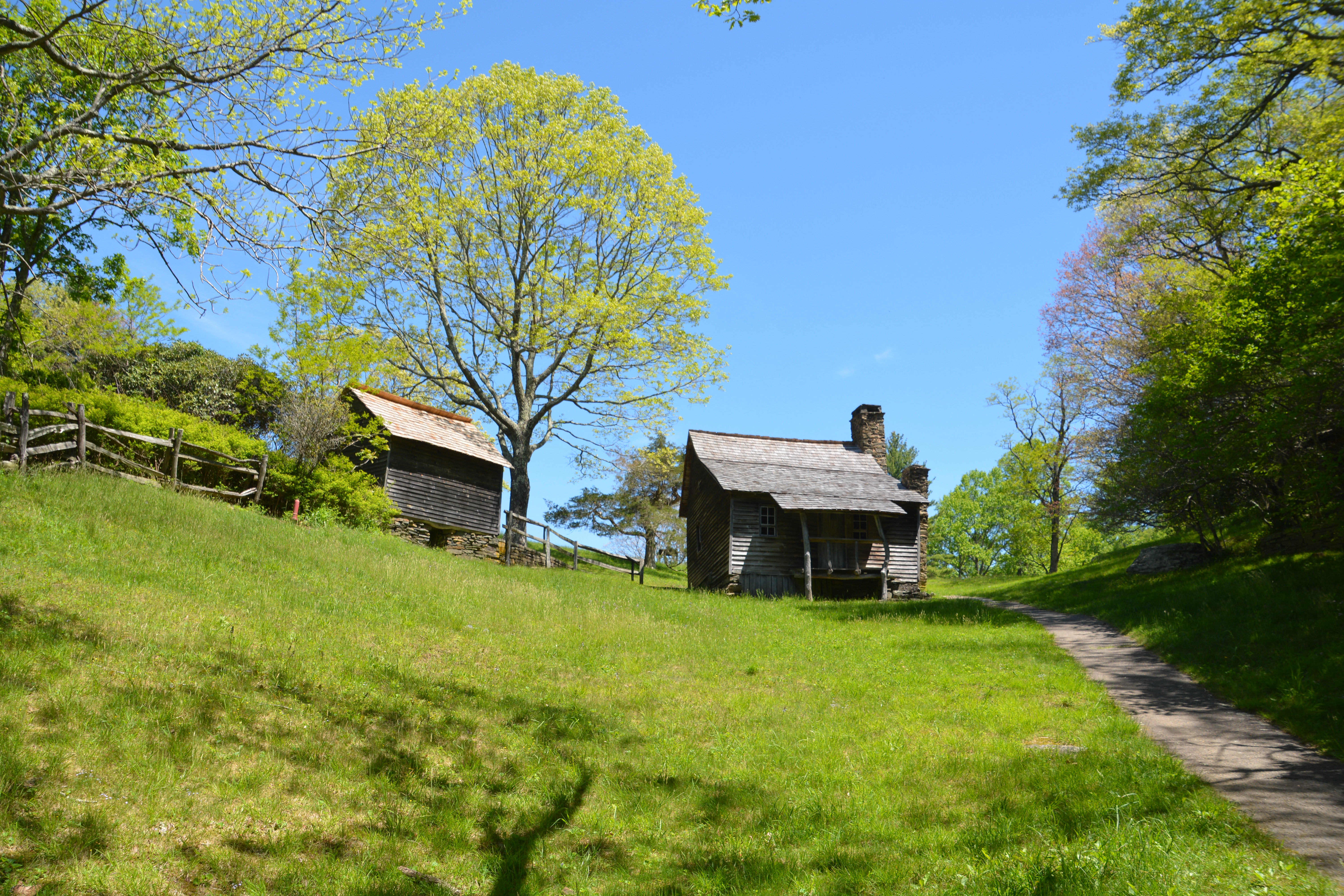
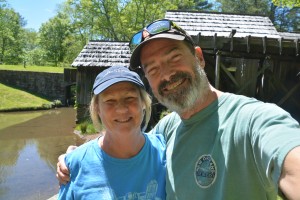
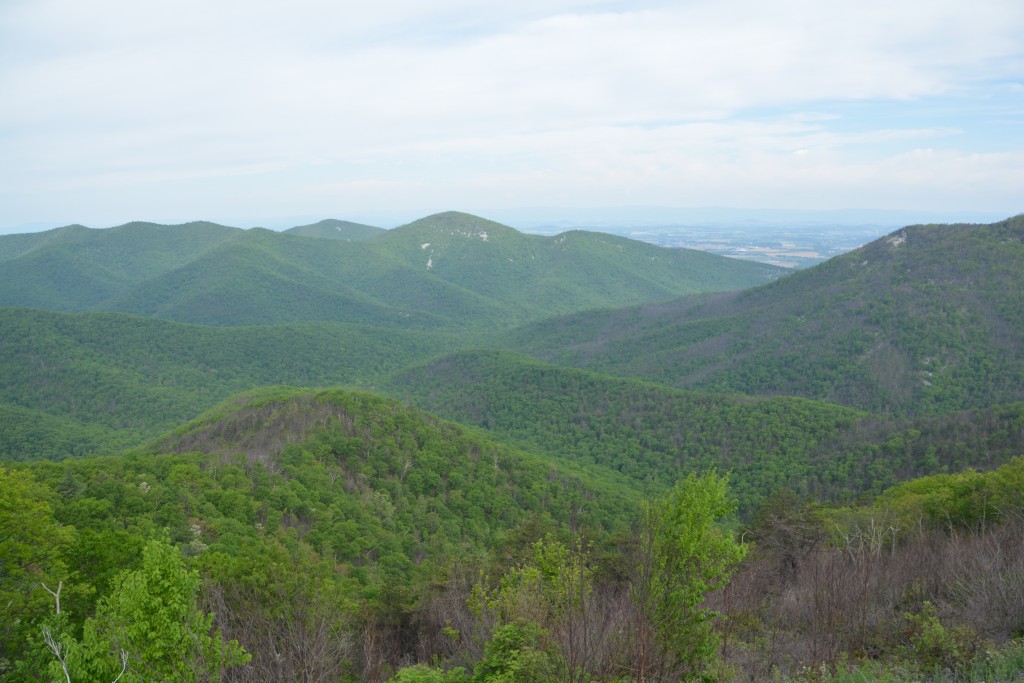
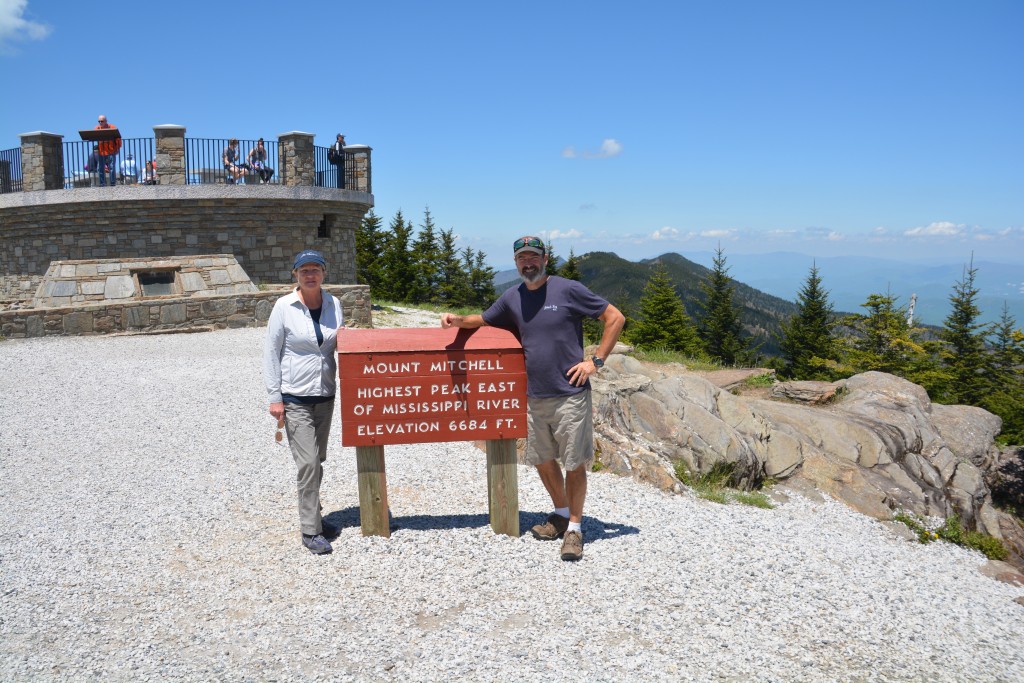
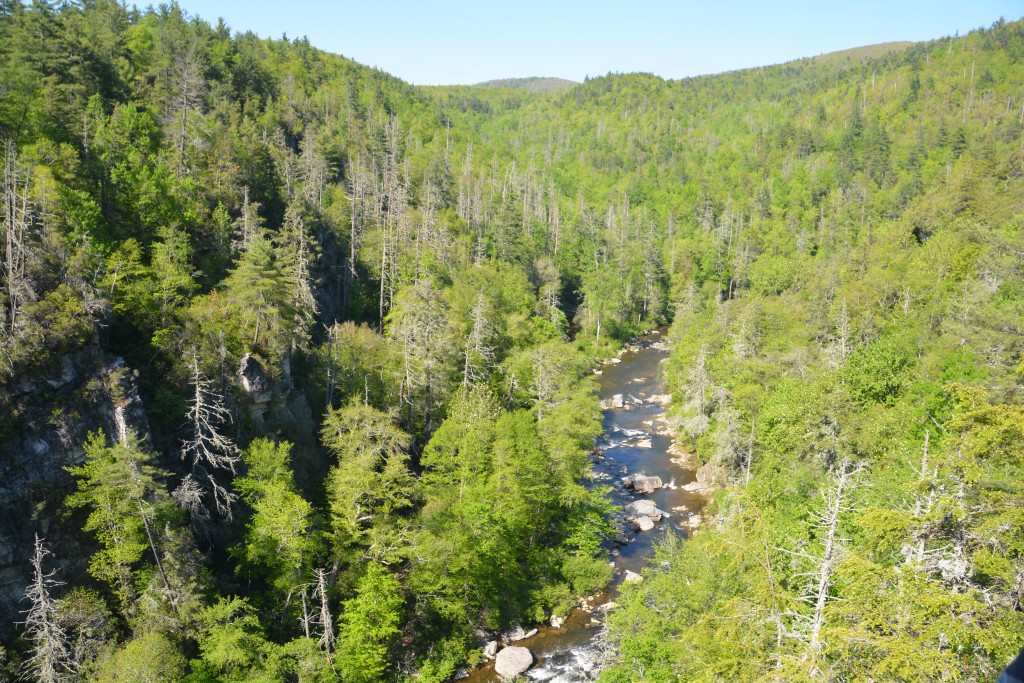
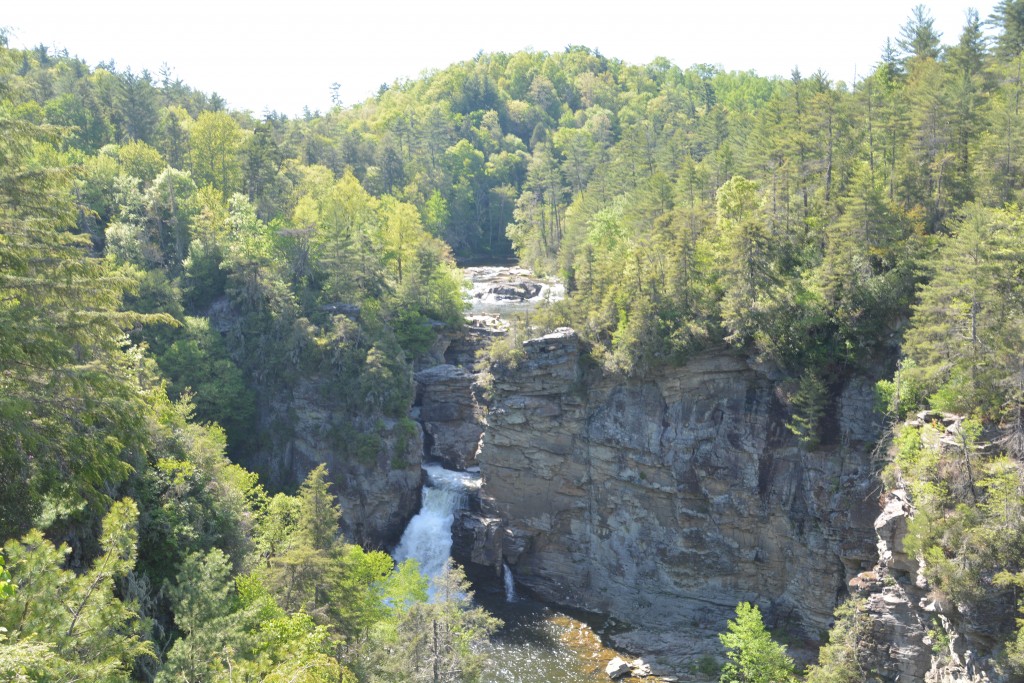
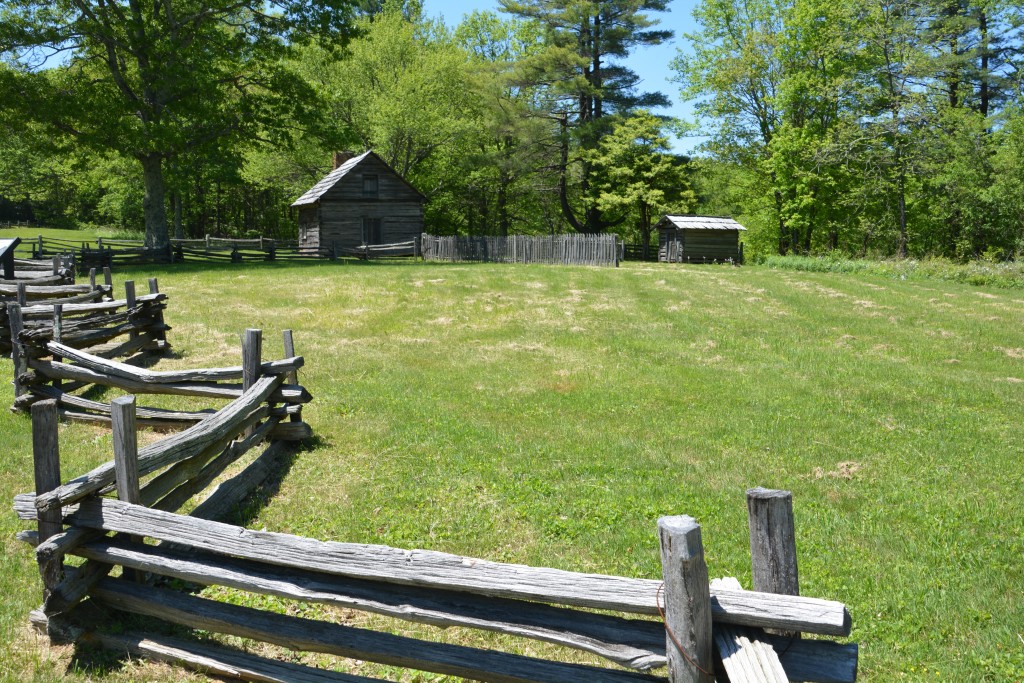
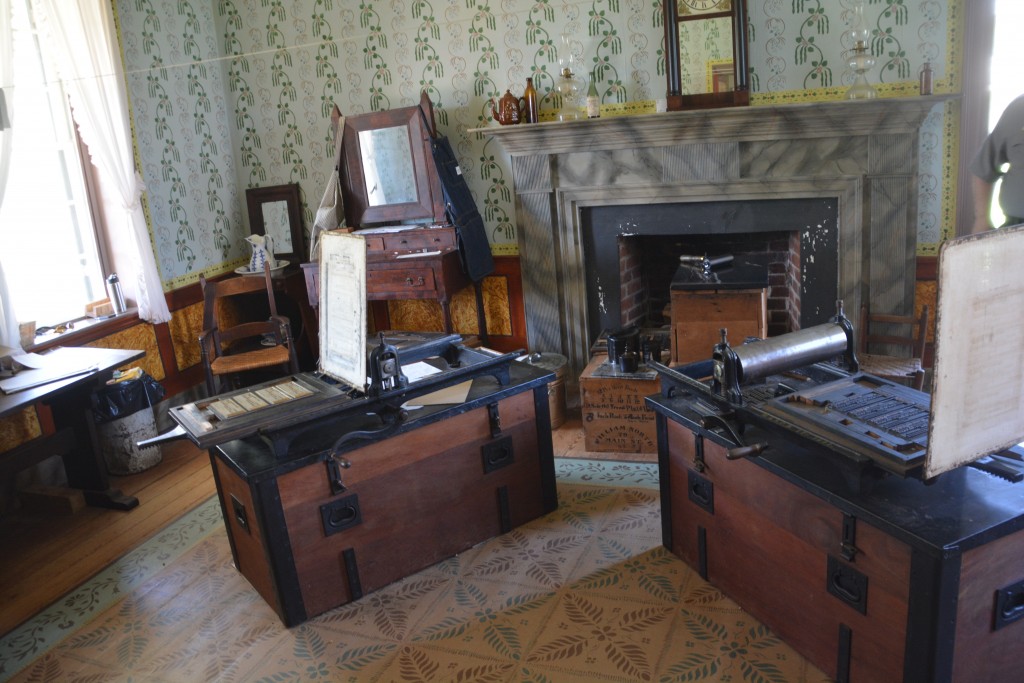
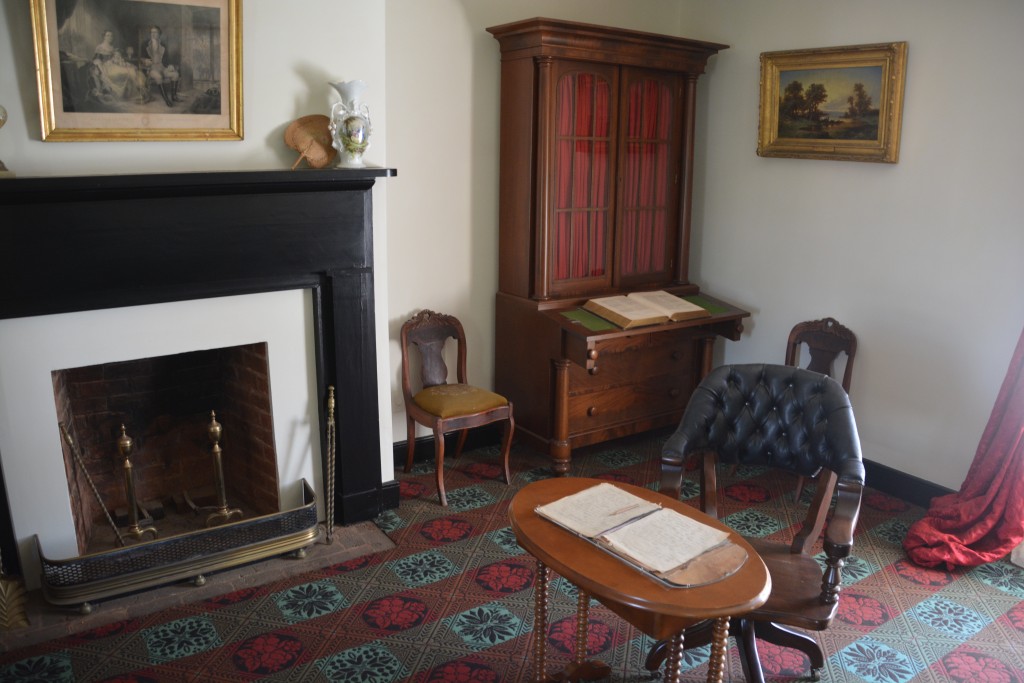
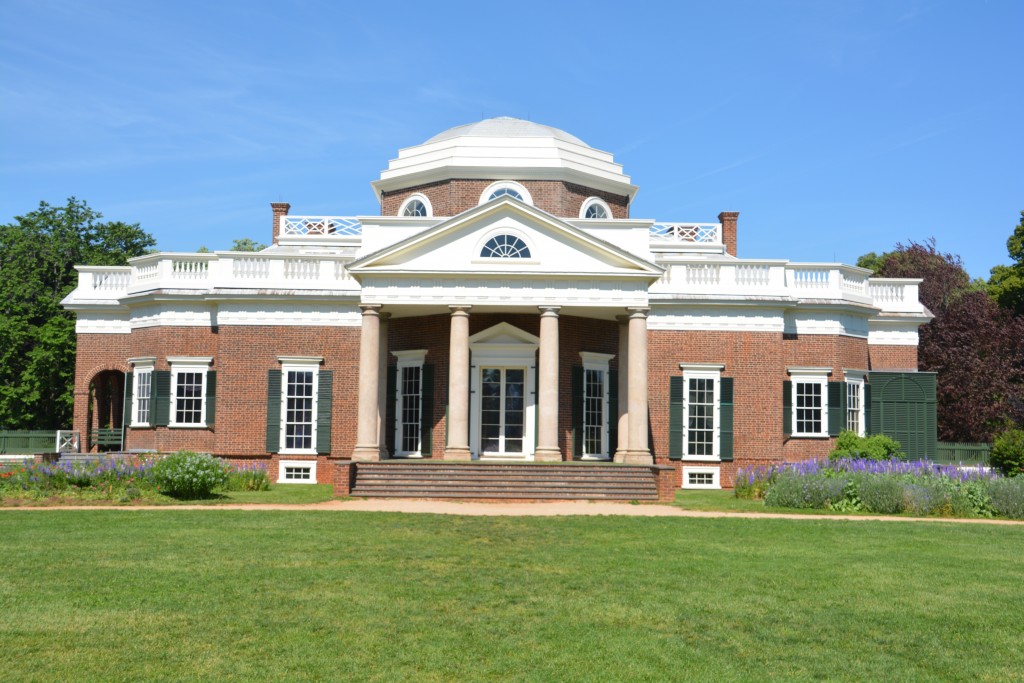
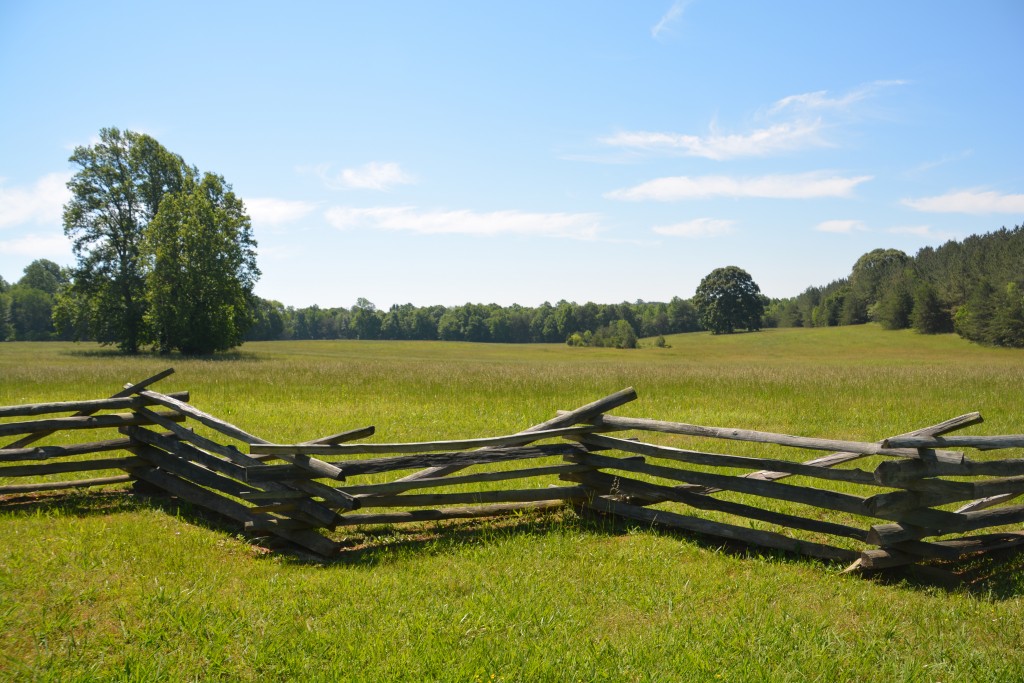
Comments
America’s Best Drive — No Comments
HTML tags allowed in your comment: <a href="" title=""> <abbr title=""> <acronym title=""> <b> <blockquote cite=""> <cite> <code> <del datetime=""> <em> <i> <q cite=""> <s> <strike> <strong>